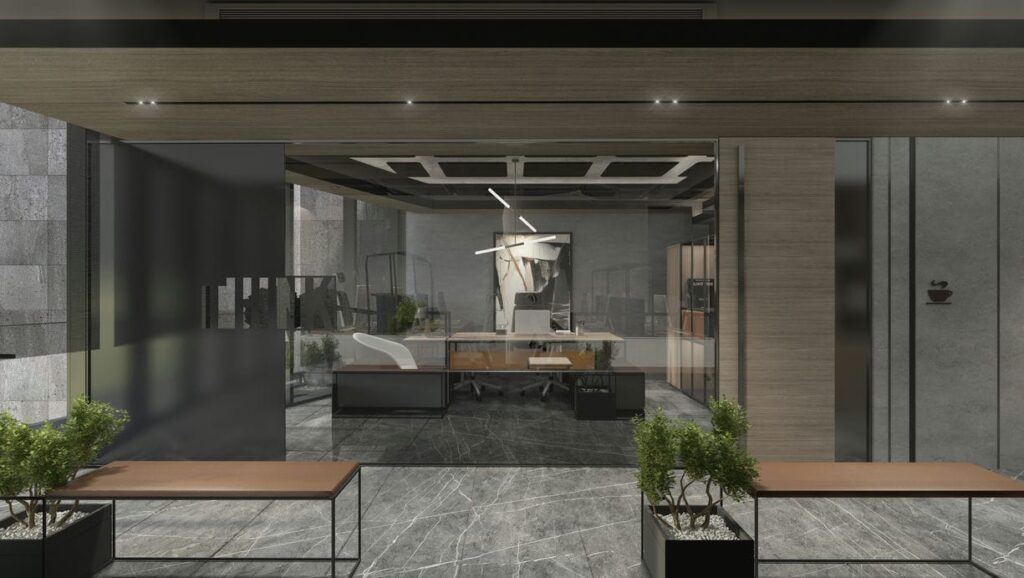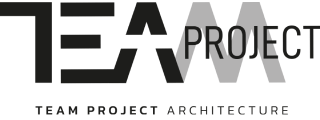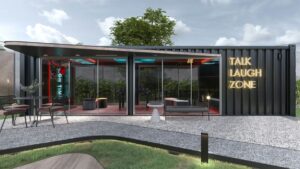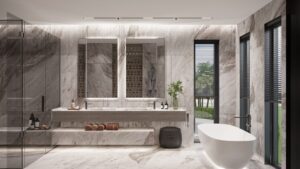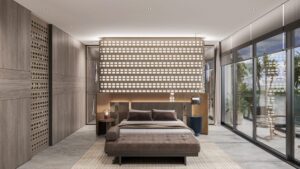TEAM Project » Design Style & Fundamentals » Contemporary Office Design: Functionality and Aesthetics Combined
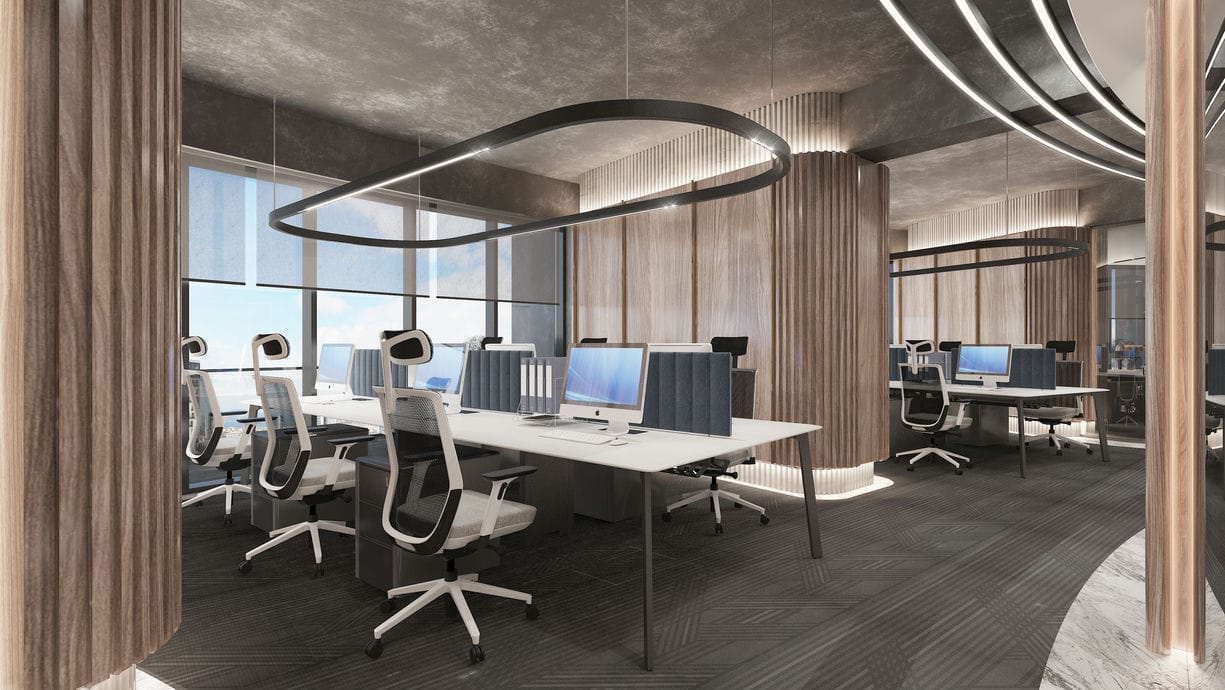
Navigating the Compact Universe of Small Space Living
Introduction:
Workplaces are not only spaces where we conduct business and archive our work; they are also significant parts of our daily lives where we spend most of our day. In office design, it's crucial to configure an organization that will properly manage the workflow and also consider design principles that will increase employees' productivity and motivation. The happiness of employees in the workplace directly affects job efficiency; therefore, planning setups where employees can breathe, communicate, occasionally be alone, and accumulate the necessary motivation to enhance their focus is of great importance. Contemporary office design is based on much more flexible principles compared to the traditional office concept, which helps employees feel more free, productive, and creative.
Comfort and Functionality in Contemporary Office Design:
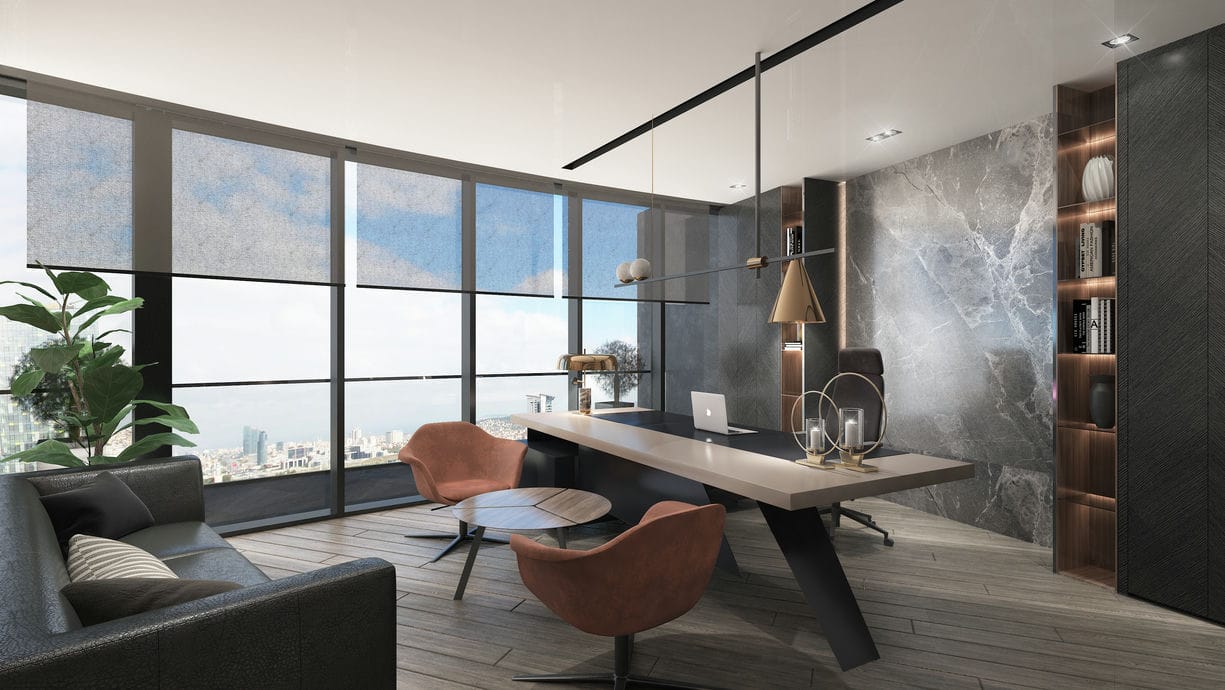
As technology advances and work styles evolve, the functions and designs of offices have also transformed. This process helps us understand how offices have been shaped from the past to the present and how today's contemporary office design has emerged.
If workspaces are arranged to assist employees, the work process will become more efficient. At this point, the functionality and comfort of the work environment are crucial; factors such as adequate lighting, indoor air quality, acoustic insulation, the proper placement of workspaces and equipment, and the creation of a suitable seating arrangement should be considered.
Office Lighting: It's essential to ensure that the work environment is adequately illuminated by both natural and artificial sources. Lighting projects should be planned according to the direction and amount of daylight the workspace receives to ensure optimum illumination. Adequate lighting reduces eye fatigue and enhances attention and concentration. It's important that the lighting is neither too bright nor insufficient.
Sound Level: In office design, acoustic measures should be taken to provide sufficient sound insulation. An environment lacking sound comfort will hinder employees' effective work and reduce productivity. The building materials used in the office should be chosen not only for their aesthetic aspects but also for their high acoustic insulation. For example, choosing products with high acoustic insulation for ceilings, walls, and floors prevents echoes within the office and increases concentration. Especially in areas with high pedestrian traffic like circulation and meeting areas, sound insulation should be ensured.
Productivity-Enhancing Furniture and Equipment: Ergonomic office furniture creates a more suitable environment for extended periods of work. For instance, an ergonomic chair and desk that promote the correct sitting position enhance employees' mental focus and maintain their physical health.
Strategies for Office Layout: Properly arranging and storing items within the office saves employees time and increases productivity. To facilitate the workflow, employees should have easy access to equipment. Under-desk pedestals or practical storage units help employees organize better.
Temperature and Humidity Balance: Creating an ideal work environment involves maintaining the correct temperature and humidity levels. Ensuring that work areas are well-ventilated and at an optimum temperature positively affects employees' comfort and concentration. Air quality not only satisfies employees but also enhances productivity and job performance.
Green Areas and Relaxation Corners: Creating spaces within the office where breaks can be taken and decorating as much as possible with plants positively affects employees' psychology. Establishing a connection with greenery, both inside and outside, is very important for motivation. Having even a small garden to breathe or creating indoor green spaces relaxes the mind and helps us connect with nature. Additionally, including green areas in relaxation spaces improves indoor air quality and makes the office environment more energetic. Encouraging employees to take short breaks significantly enhances the quality of work and their motivation.

Aesthetic and Spatial Evolution in Contemporary Office Design: Changing Dynamics in Workplaces
Today, workplaces have evolved from merely locations where business activities are conducted to multifunctional spaces. Consequently, considering the organization and aesthetic elements of offices has become inevitable. Here's an in-depth look at the aesthetic elements and spatial evolution in contemporary office design:
The Impact of Spatial Aesthetics on Job Productivity
 Office design plays an undeniable role among the many factors affecting job productivity. In today's designed offices, this awareness is increasingly recognized. Detailed analyses of minimalist furniture choices, flexible layout schemes, the energy of the work environment, and color choices that will positively affect employees' productivity are reflected in the interior design through the use of artistic and decorative elements and biophilic design.
Office design plays an undeniable role among the many factors affecting job productivity. In today's designed offices, this awareness is increasingly recognized. Detailed analyses of minimalist furniture choices, flexible layout schemes, the energy of the work environment, and color choices that will positively affect employees' productivity are reflected in the interior design through the use of artistic and decorative elements and biophilic design.
Flexible and minimalist approach: In the design of work areas, furniture choices should be flexible enough to adapt to changing conditions without leading to complexity and clutter. Adopting a flexible and minimalist approach can be beneficial both for interior circulation and proper planning.
Balance of colors: Colors have a significant impact on people's moods. Therefore, the colors used in office design not only create an aesthetic perception but also enhance job productivity. Calming colors like blue and green reduce stress and increase focus, while vibrant colors like red energize. Thus, choosing colors appropriate for defined tasks in the interior can lead to more effective outcomes.
Biophilic design: The concept of biophilic design aims to strengthen our connection with nature and incorporate more natural elements into our living spaces. According to this approach, from furniture to building materials to our belongings, natural products should be chosen. Daylight, ventilation, and indoor landscape design are essential elements of biophilic design. The plants used in landscaping should be suitable for the work environment, maintained regularly, and indoor air quality should be considered. These elements create an aesthetic perception in the interior while also reducing employees' stress and enhancing their motivation. Therefore, biophilic design elements can be adapted especially to relaxation areas where employees take short breaks.
Artistic and Decorative Elements: In contemporary office design, the impact of decorative elements displayed in the interior is significant. These elements not only beautify the general appearance of the office but also transform the work environment into a more aesthetic and inspiring space. The use of decorative objects and artwork transforms the energy of the space and creates a more vibrant atmosphere. Additionally, such an environment enhances employees' creativity and adds vitality to the space. Adding artistic touches to the work area creates a more productive and enjoyable work environment, supporting both the increase in job productivity and satisfaction.

Spatial Evolution and Changing Dynamics
With advancing technology and changing work culture, new needs have emerged in workspaces over time. Therefore, office designs must be reviewed and rearranged to respond to changing dynamics. Analyzing the spatial evolution in office designs from the past to the present is crucial.
The Rise of Open Offices and Flexible Workspaces
The traditional office layout, which isolated employees from interaction and communication, used enclosed spaces. Even the partitioned work arrangements in open office layouts were eventually seen as reducing employees' interaction. Today, flexible workspaces and hybrid offices are preferred, providing employees with sufficient flexibility and the opportunity for individual work or interaction as needed. One of the main reasons for this preference is the increased value placed on employees' creativity and well-being.
Changing Space Dynamics: Hybrid Offices
"Hybrid office" is a concept that completely changes the traditional office layout and offers solutions suitable for hybrid and remote work arrangements. In this flexible office space, where different businesses and individuals work together, both individual and shared areas can be used. This work arrangement is a professional option for freelancers, entrepreneurs, and small teams. It encourages teamwork while also creating suitable spaces for tasks requiring individual focus.
Conclusion:
The changing work culture, advancing technology, and the needs arising from these changes necessitate a review of office design. Making spatial adjustments to enhance employees' productivity, motivation, and satisfaction is crucial for workplaces to adapt to the future. Therefore, integrating elements like functionality and aesthetics into the design in a balanced manner is of great importance for productivity.
